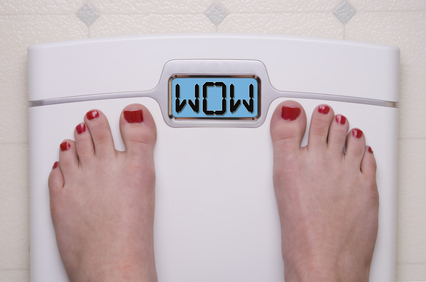A recent trip to a doctor to have my ears syringed resulted in a routine weighing on a balance scale—you know, the kind where you are balanced against weights slid along a beam. These are accurate to within 0.5% or less.
This is very different to the spring loaded bathroom scales. As metal springs age they go stiffer. What does that mean? They stretch more reluctantly and won’t let the needle on the dial get right around to your true weight.
In other words they lie and tell you that you are lighter than you really are. 
I found with a shock I was 12 pounds heavier than I thought (hastily instigated more time in the gym and changed my evening diet routine).
So, let me warn you of this. You probably weigh more than you think you do. Get a proper weight on a balance scale (make sure the doctor’s office has the right scales—the nurse will probably do it for you for no cost). Check this against your bathroom scales on the same day and if the difference is more than 5- 6 lbs, junk them.
Junk them anyway after about 2 years max.
Simple spring-loaded bathroom scales are fine for following change of weight, such as when you are determinedly dieting. But you must still check your true weight from time to time.
In any case, know that your weight is NOT the most critical health measure. Muscle weighs more than fat so you can go heavier as you exercise and replace fat with muscle.
What’s the most important measure for health? Waist to hip ratio. Measure yourself round the widest part of your abdomen (let it out, no cheating!) Then do the same round your hips. Men should be 1:1 maximum (waist same as hips). Women should be 0.85 (waist at least 1- 2 inches LESS than the hips).
This supersedes the old discredited measure of body mass index (Michael Jordan, a superb athlete, is obese according to BMI).
And gals, waist to hip is what attracts guys the most!
The post Beware Those Bathroom Scales, They Lie! appeared first on Dr. Keith Scott-Mumby.
